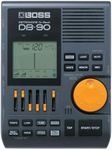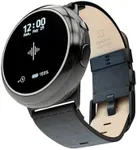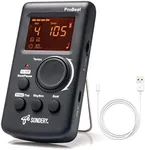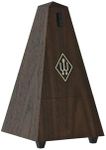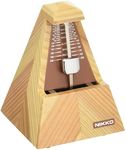Buying Guide for the Best Metronomes
Choosing the right metronome is essential for musicians who want to improve their timing and rhythm. A metronome is a device that produces a steady pulse to help musicians play in time. When selecting a metronome, consider your musical needs, the environment in which you'll be using it, and any additional features that might enhance your practice sessions. Understanding the key specifications will help you make an informed decision that best suits your requirements.Tempo RangeTempo range refers to the range of speeds at which a metronome can operate, usually measured in beats per minute (BPM). This is important because different musical pieces require different tempos, and having a wide range allows for greater flexibility in practice. Typically, metronomes offer a range from 40 to 208 BPM. If you play a variety of music genres, a wider tempo range might be beneficial. For beginners, a standard range is usually sufficient, while advanced musicians might prefer a metronome with a broader range to accommodate complex compositions.
Sound OptionsSound options refer to the different types of sounds a metronome can produce, such as clicks, beeps, or even voice counts. This is important because different sounds can be more or less distracting depending on the musician's preference and the environment. Some metronomes offer adjustable volume or different sound types to suit various practice settings. If you practice in a noisy environment, a louder or more distinct sound might be necessary. Conversely, if you prefer a subtle background pulse, a softer sound option would be ideal.
Display TypeDisplay type refers to how the metronome visually represents the beat, which can be through lights, a pendulum, or a digital screen. This is important for visual learners who benefit from seeing the beat in addition to hearing it. Traditional pendulum metronomes offer a visual cue with their swinging motion, while digital metronomes might use flashing lights or a screen display. If you find visual cues helpful, choose a metronome with a clear and easy-to-read display. For those who rely solely on auditory cues, the display type might be less critical.
Additional FeaturesAdditional features can include things like tap tempo, built-in tuner, or rhythm patterns. These features are important for musicians who want more than just a basic metronome function. Tap tempo allows you to set the tempo by tapping a button, which can be useful for matching the tempo of a song you're learning. Built-in tuners are helpful for musicians who need to tune their instruments before practice. Rhythm patterns can aid in practicing complex rhythms. Consider what additional features might enhance your practice and choose a metronome that offers those functionalities.
PortabilityPortability refers to how easy it is to transport the metronome, which is important for musicians who travel or practice in different locations. Smaller, lightweight metronomes are easier to carry around, while larger models might offer more features but are less convenient to transport. If you frequently move between practice spaces or travel for performances, a compact and portable metronome would be ideal. For home use, portability might be less of a concern, allowing you to opt for a larger model with more features.



